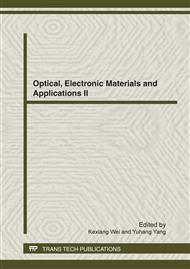p.343
p.347
p.352
p.356
p.361
p.366
p.371
p.376
p.380
Research Progress on Non-Invasive Glucose Monitoring Based on Reverse Iontophoresis
Abstract:
To research the glucose levels with diabetes to reduce complications, a method which is about the noninvasive glucose monitoring based on the reverse iontophoresis has been introduced. This paper summarizes the theory of reverse iontophoresis as well as the method of tissue fluid’s extraction, and reviewed the research progress on non-invasive glucose monitoring based on the principle of the reverse iontophoresis,and investigated glucose sensors for low level glucose monitoring, pointed out the other elements detection based on the iontophoresis method in tissue fluid. The technology based on reverse iontophoresis could be the most possible method to detect glucose noninvasively, moreover the precision and accuracy of the GlucoWatch could be improved in the future.
Info:
Periodical:
Pages:
361-365
Citation:
Online since:
June 2012
Authors:
Keywords:
Price:
Сopyright:
© 2012 Trans Tech Publications Ltd. All Rights Reserved
Share:
Citation:


